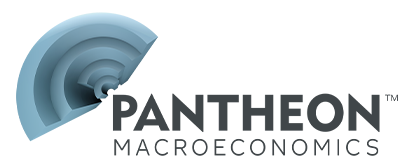China+ Publications
Below is a list of our China+ Publications for the last 5 months. If you are looking for reports older than 5 months please email info@pantheonmacro.com, or contact your account rep
Please use the filters on the right to search for a specific date or topic.
China's steadyish Q2 real GDP growth boosted by intensifying deflation; nominal growth lowest since Q4 2022
- China’s broad credit growth rose in June, but mainly thanks to government-bond issuance.
- The rise in corporate borrowing is distorted by the local-government debt swap; it’s likely still sluggish.
- M1 jump is hopeful but may prove a blip given the lack of supporting data elsewhere pointing to an upturn.
- Valuation effects explain 60% of China’s foreign exchange reserves rise in June.
- A rush to ship exports ahead of the August 12 tariff deadline likely contributed to the rise in reserves.
- Beijing’s moderate 2030 consumption growth target offers clues about China’s growth strategy.
- The BoK kept the policy rate unchanged in July, citing concerns over trade policy and Seoul’s housing market.
- The MPB was torn, focusing its decision on trade- induced growth worries versus financial stability risk.
- We expect the Bank to resume rate-cutting once apartment prices show signs of easing in Seoul.
China's worsening producer deflation mainly due to bad weather
Low core consumer inflation reflects weak demand
- China’s producer deflation is entrenched, but the worsening in June was due to temporary factors.
- Auto prices rose, after firms pledged faster supplier payments; other sectors are making supply policies.
- Weak core consumer inflation is indicative of poor demand; all eyes on the end-month Politburo meeting.
- Japan’s wages took a big knock from a bonus plunge in May, as exporters’ profits were hurt by the tariff war.
- The headline large-manufacturer Tankan was oddly steady in Q2, despite the tariff war.
- Consumption still looks soft, despite one-off factors boosting May’s household spending data.
- Chinese policymakers are seemingly rethinking policy to rein in unbridled competition, after prior false starts.
- The key is political will—and a plan—to overcome vested interests, both local governments’ and firms’.
- Getting it right should lead to firmer pricing, stronger profits and less wasted capital investment.
- The HKMA intervened again on Wednesday to defend the currency peg, which has been in place since 1983.
- The LERS is a double-edged sword: Hong Kong loses monetary policy freedom but gains stability.
- Any talk of re-pegging the HKD is premature; China and HKSAR are not yet an Optimal Currency Area.
China's Caixin PMI, Korea's PMI and Japan's Tankan point to manufacturers' measured relief at easing trade tensions
- The Caixin PMI rebounded more strongly than the official manufacturing index in June…
- …Deflation pressures are festering, however, likely forcing regulatory curbs on excessive competition.
- Korea’s manufacturing PMI is starting to rise from its sickbed, now the election has reduced political risk.
- The PBoC on Friday hinted it saw less need for a near- term monetary policy boost than three months ago.
- The June official manufacturing PMI improved, thanks to policy support and an easing in tariff tensions.
- The construction PMI ticked up at last, but it’s too soon to celebrate; the hard data pointed to slowing.
